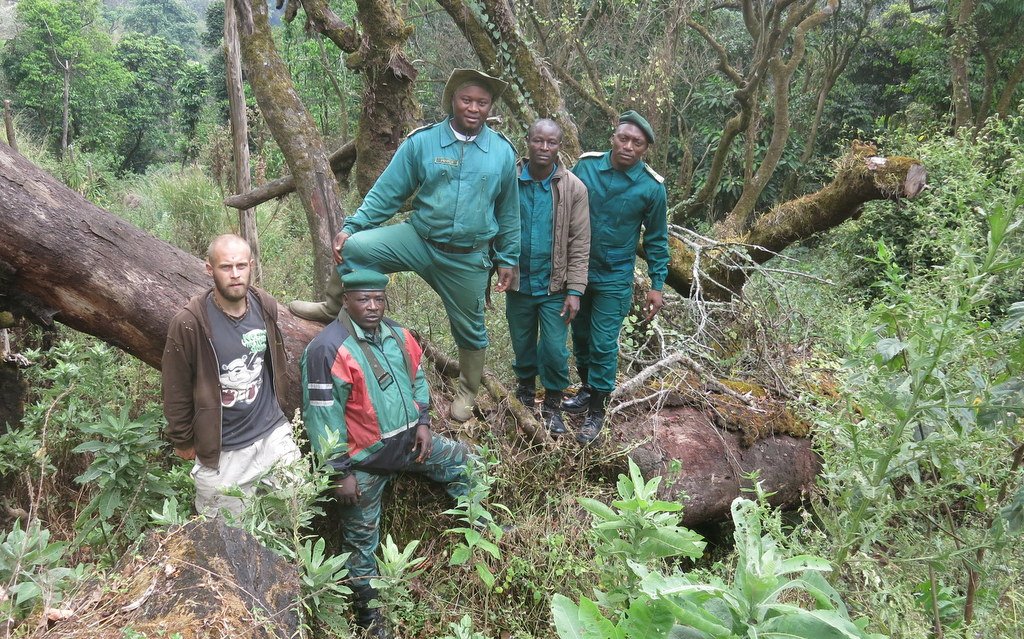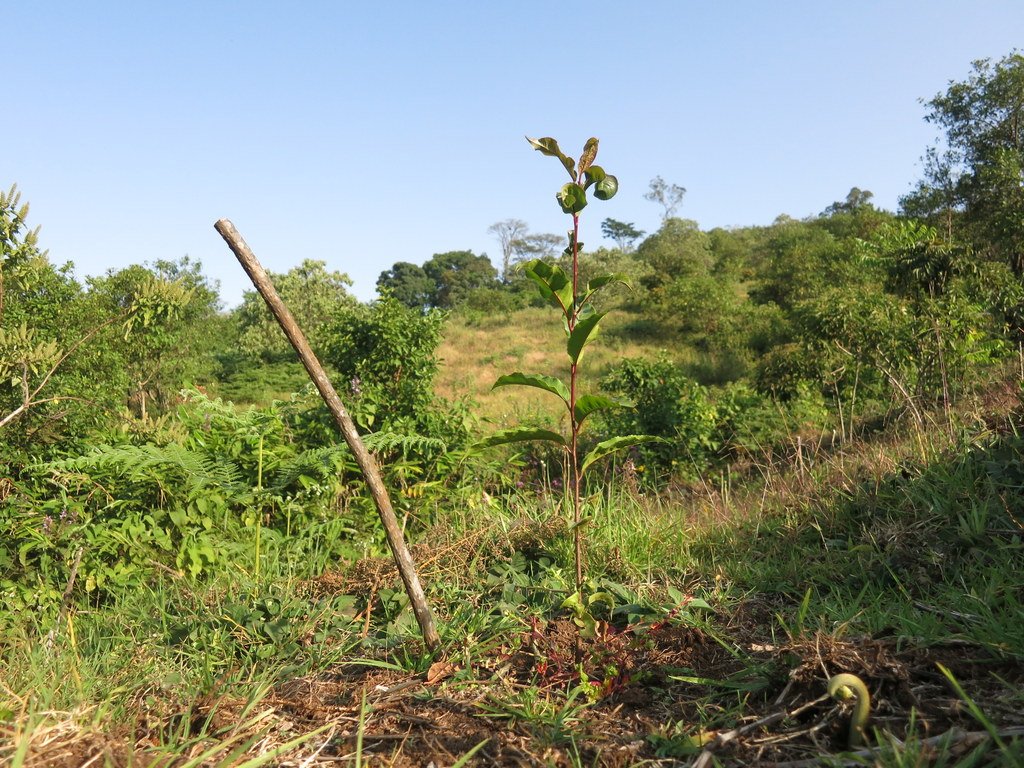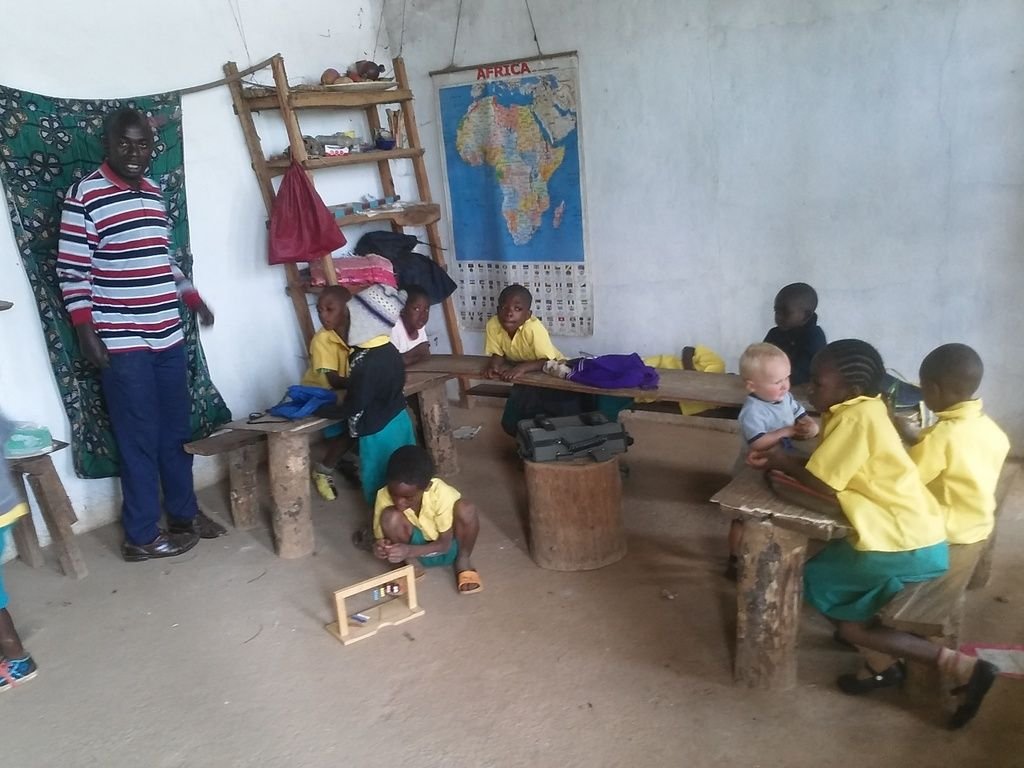Let’s join forces and save the remaining fragments of the Abongphen Highland Forest in Cameroon.

The misty mountain forest lies in the Kedjom-Keku area, whose name translates to the People of the Forest. It is a source of drinking water for millions of people and it is the natural habitat of the most threatened chimpanzee subspecies, the Nigeria-Cameroon chimpanzee, as well as hundreds of other endemic organisms of the Bamenda Highlands. Due to unsustainable development practices, the forest currently covers a mere 2% of its original area.
Unique approach
We will use an investment concept to ensure socio-economic sustainability and forest protection. We will employ a local loan-invest approach, referred to as Njangi groups, to launch small businesses for local people with emphasis on the integration of organic farming and agroforestry practices and good management and social responsibility. Those groups will be further connected by an agro-cooperative called Forest Friendly Family. This approach will lift people from poverty, will allow them to be fully involved in those activities, will let them acquire new skills and competences on all small-scale company levels (farmers to managers) and will use sustainable and profitable methods of farming.
Why are cameroonian misty mountain forests disappearing?
1. Rapidly growing population - 2% annually
2. Education is of a very poor quality - 60 is the minimum number of students per class.
3. Irresponsible usage of natural resources, slash and burn farming, extensive pastures for grazing animals, increase in the usage of chemicals and technology in farming
4. Long term unsustainable development. Roads built in areas with water springs
5. Lack of interest from the local administration
6. Insufficient law enforcement – the foresters campaigned only 3 times in the past 5 years
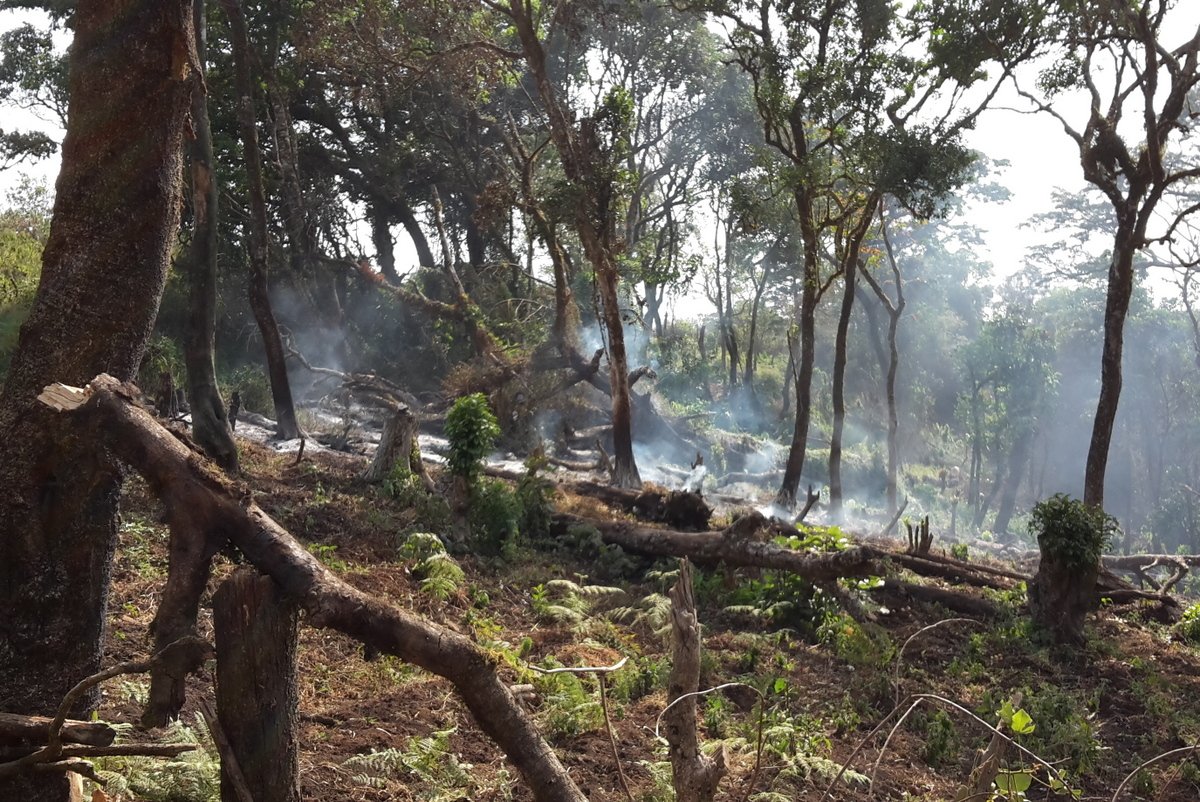
WHAT IS OUR GOAL?
PROTECTION AND RESTORATION OF THE FOREST
Why do we have to save cameroon’s forest?
There is no life without water, yet we are destroying one of its vital sources – forests. The misty mountain forest in the Bamenda Highlands in Northwest region of Cameroon covers only 2% of its original area. The extreme decrease in its size is the cause of the significant climate changes that have occurred in the region in the past 20 years. The amount of water in regional rivers has drastically declined and so has its quality. Local water sources are polluted by chemicals from farms and feces from cattle pastures. The farming land suffers from loss of nutrients. People living in or around the forest keep on burning more forest to open their farms, and repeat their extremely low-effectivity farming. If no measures are taken to improve life conditions and farming practices, the misty mountain forest in Kedjom-Keku’s quarter Abonghpen (called Abongphen Highland Forest) will most likely be erased for good within the next five years. If this happens, People of the Forest will lose both their identity and source of water (together with millions of humans downstream). Together with the forest, hundreds of endemic species which are only found in this particular place and nowhere else on the planet will go extinct. Some of these are the endangered Bannerman’s Turaco, a rare bird, and the most threatened chimpanzee subspecies, the Nigeria-Cameroon chimpanzee.
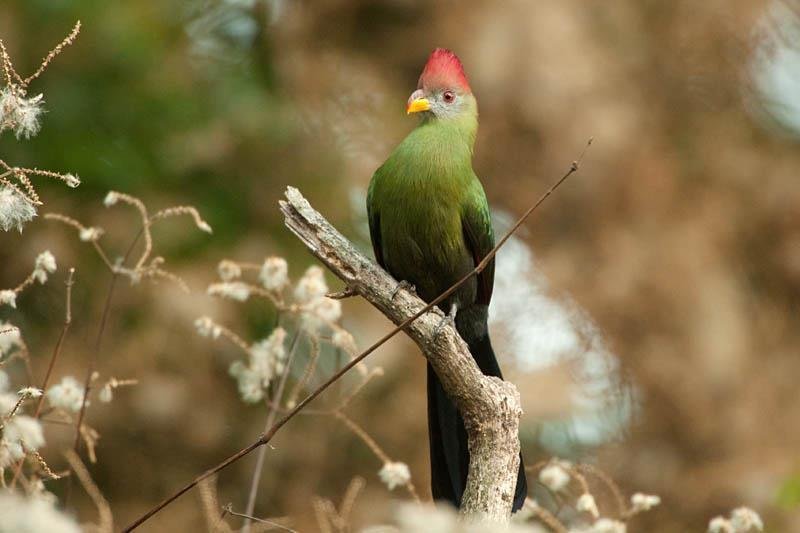
OUR GOAL: To save 1,000 hectares of area to which the forest can spread
As a first measure, a six-men forest guard will be established. The forest guards will be locals who we will provide with necessary equipment and training. Their task will not only be to stop the drastic shrinking of misty mountain forests, but also to talk to other locals and spread information about the importance of saving the forest. The biggest threats the forest guards will be acting against are bush fires, the usage of chemicals in water spring areas, farming and raising cattle in original forest areas, poaching and logging. In order to better plan the protection and renewal of the forest we will create a detailed map of the entire region and with the help of the locals we will develop a sustainable long term land use plan for it.
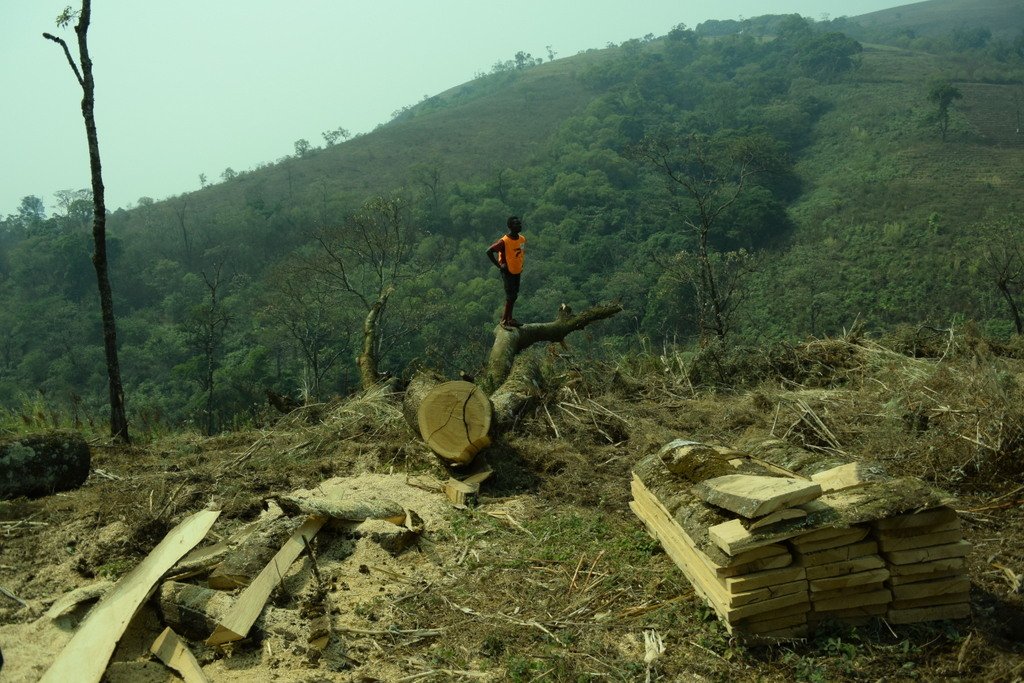
OUR GOAL: To restore at least 1,000 hectares of the original area of the forest
Approximately 2,000 years ago the misty mountain forest covered all of the Bamenda Highlands. By the mid 20th century it only covered half of this area. Nowadays we can find the forest’s remnants on a mere 2% of the mountains. This is why we want to expand its remaining couple of thousands of hectares by at least one more thousand. These are the steps we aim to carry out to achieve our goal:
- Surround the remaining bits of the forest with fire-resistant hedgerow, protect them from fire and cattle and allow ecological succession to happen.
- Join forces with 25 members of the local community, who we will employ for the next five years and plant a million trees. During this period we will also teach them beekeeping, agroforestry and vertical farming techniques, how to manufacture their own agricultural products and other skills that will make them independent from our salary.
- We plan to identify and restore forest corridor between the misty mountain forest in Abongphen (Kedjom-Keku) and two nearest widespread fragments of the Kilum-Ijum cloud forest in Oku (5km away) and the Kom-Wum lowland forest (10km away from Abongphen) within the next ten years.
RAISING EDUCATION AND AWARENESS
Why increase the quality of education in cameroon?
Lack of high quality education is one of the major issues in developing countries. Only 30% of Abongphen’s inhabitants are literate. The only way to secure the future of Kedjom-Keku’s nature is to educate the locals. Broadening their horizons will allow them to understand the effects of their actions on the environment and engage themselves in protection activities. Personal growth and critical thinking will be encouraged.
OUR GOAL: Equip and ensure the smooth running of the Misty Mountain Conservation Centre in Abongphen
Since 2012 we have been building a conservation centre in the area. We will equip it with the necessary materials that will make it much easier to educate those directly responsible for the uncontrolled transformation of the indigenous forest into farmland. The centre also includes a primary school that currently teaches 100% of all the children in Abongphen aged 3 to 12 years old.
OUR GOAL: Start educating people about the protection of nature, addressing alcohol and drug usage, safe sex and general interpersonal relations
Not everything we should learn in life is covered in school curriculums. This is why we will focus on out-of-school education of children and their parents.
IMPROVING LIVING STANDARD OF LOCALS
Why is it necessary to improve the living standard of locals?
If we want to protect nature, we have to primarily focus on the people who affect it. Unless they have a different source of livelihood than the major cause of deforestation - opening new farms - no meaningful conservation activities can be successful. In order to make the locals independent of the forest-destructive activities, and encourage a symbiotic relationship with the forest, we would like to offer them different forms of livelihood that would be sustainable. We will organize educational workshops, offer them microloans in the form of investments and help them build experimental and demonstrational organic farms where they will be able to gain practical experience and insight from other farmers and lecturers.
OUR GOAL: To improve the living conditions of 500 locals directly, 100,000 indirectly
We will teach the locals the following skills and provide them with the necessary equipment:
Beekeeping – 150 people
Organic agroforestry – 150 people
Aquaponic vertical farming - 50 people
Forest friendly cattle grazing – 50 people
Ecological processing of agricultural products – 50 people
Research and ecotourism – 50 people
Since it is an investment, once it is repaid the remaining finances will be reinvested. Your investment will therefore not only be returned, but will form the basis for further beneficial investments.
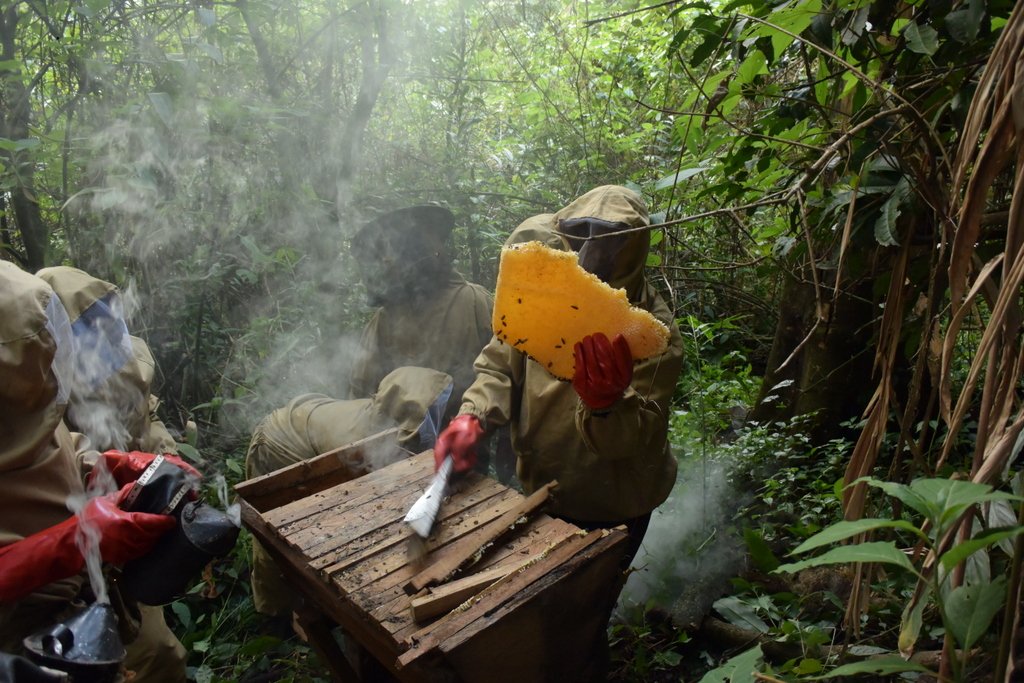

TRANSPARENCY
Why is it necessary to focus on transparency?
Similarly to other developing countries, Cameroon is unsuccessfully fighting ever-increasing corruption. Corruption and lack of transparency is present in all levels of the country's administration.
OUR GOAL: To be unbribable, transparent and serve as an example for others to follow
We will film everything we do. We will create educational videos. We will launch a website for the local village council and we will teach its members how to use transparent tools to build the trust of the locals. We will publish all transactions, successes and failures.
How do we want to save the Abongphen Highland Forest and achieve sustainable development?
Forest Friendly Family cooperative
All of our investment based protection and development activities will be carried out under the auspices of FFF. It is important to us that we ensure the programme is sustainable by bringing people together.
Njangi
The Rotating Savings and Credit Association is a form of local bank, which is based on trust and a family-like community. A given number of people (in our case 25) meets up regularly to both save up and lend money to people within the group.
Women
Women are the main force driving Cameroon's development, as well as the best guarantee of the sustainability of all activities. This is why we will predominantly focus on them. 70% of all people who will join our protection and sustainability related activities will be women.
Traineeship
Although you can find essentially all types of modern technology in equatorial Africa, nobody can use the machines, appliances and technological products effectively. We will therefore teach the locals how to use them properly.
Block Chain
Utilising the block chain technology where opportunities arise. The decentralized nature of the technology coupled with the ability to store transparent and verifiable information relevant to the project makes it a good fit. It has potential for performing as a ledger of activities, and also the potential to act as an incentive in the carbon offsetting activities of local farmsteads.
What we have achieved (since 2010)
1. We have physically built and launched a nursery and primary school. The teachers are from Cameroon and it has 20 pupils (all the children living in the mountains).
2. We increased awareness of the importance and different functions of the forest and slowed down (unfortunately not halted) its decrease.
3. We taught twenty local farmers beekeeping. We also provided them with the necessary equipment in a form of investment so they could become beekeepers themselves.
4. We planted 5,000 trees (unfortunately, due to a period of drought only 1,000 survived), which are slowly restoring 5 hectares of deforested area around one of the hundreds of water springs in Abongphen.
5. We launched an ecotourism programme called Holidays That Matter that helped us bring in hundreds of locals and foreigners.
